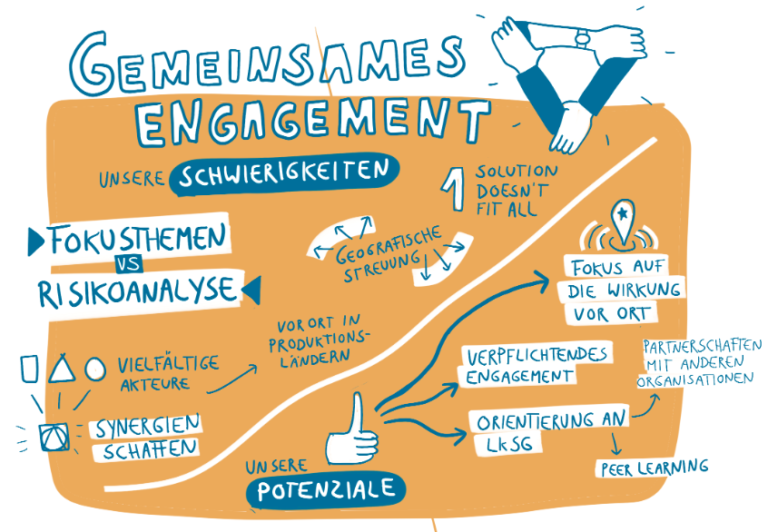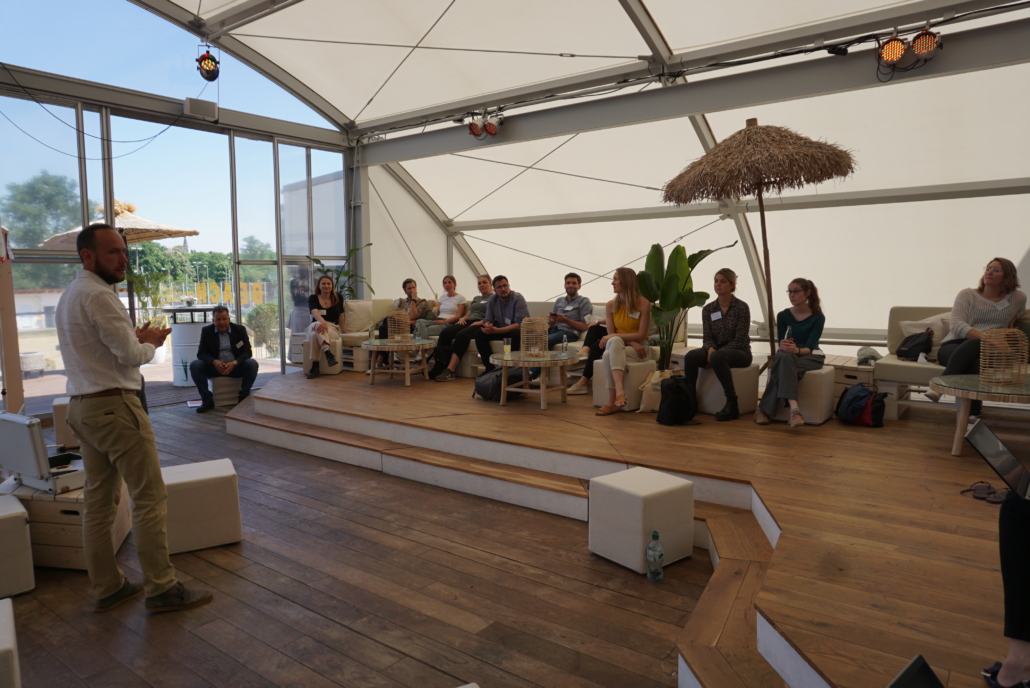Thinking Ahead: Collective Engagement in the Textile Partnership
Thinking Ahead: Collective Engagement in the Textile Partnership

Collective Engagement is an important component of the Textile Partnership. Because where individual actors reach their limits, members can work together to achieve better results for people and the environment in production countries. Thus, several members join forces in Partnership Initiatives and Projects , for example for living wages, good wastewater management, effective grievance mechanisms and improvements in working conditions in Tamil Nadu, South India.
At a workshop at the Textile Partnership working meeting in May, members discussed how the Textile Partnership can become even better in Collective Engagement and achieve greater impact on the ground in the producing countries.
Many members voluntarily participate in one or even several Partnership initiatives. In order to increase the impact of the Collective Engagement, a broader participation from all groups of actors is necessary. Therefore, the members' own initiative should be strengthened, and the offers expanded so that in the future every member can find a project in which they can engage meaningfully and in a way that fits their own goals and individual business model.
The strengths and challenges of a multi-stakeholder initiative are also evident in the Collective Engagement. The different actors and their respective expertise are characteristic and valuable for the Textile Partnership. At the same time, the diverse positions, experiences, and interests require an intensive and regular exchange. The Partnership members also emphasised this in the workshop and spoke out in favour of further exchange formats, for example to find ideas, plan and implement joint projects, but also to share best practices with each other. Furthermore, it is necessary to recognise the different levels of experience (beginners vs. pioneers) of the Partnership members and to support each other.
In addition, it is a concern to open up projects - where appropriate and possible - to other organisations and to involve more local actors and rights holders. Impact measurement, transparency and risk analysis are important so that projects can be better planned and more efficient in the future.




